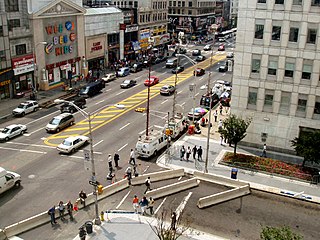
Mass media includes the diverse arrays of media that reach a large audience via mass communication.

In mass communication, digital media is any communication media that operates in conjunction with various encoded machine-readable data formats. Digital content can be created, viewed, distributed, modified, listened to, and preserved on a digital electronic device, including digital data storage media and digital broadcasting. Digital is defined as any data represented by a series of digits, and media refers to methods of broadcasting or communicating this information. Together, digital media refers to mediums of digitized information broadcast through a screen and/or a speaker. This also includes text, audio, video, and graphics that are transmitted over the internet for viewing or listening to on the internet.
Video clips refer to mostly short videos, which are usually silly jokes and funny clips, most of the time coming from movies or any entertainment videos such as YouTube. Short videos on TikTok and YouTube often influence popular culture and internet trends. Such clips are usually taken out of context and have many gags in them. Sometimes they can be used to attract the public to the user's other accounts or their long-form videos. The term is also used more loosely to mean any video program, including a full program, uploaded onto a website or other medium.

The news media or news industry are forms of mass media that focus on delivering news to the general public. These include news agencies, newspapers, news magazines, news channels etc.
Public-access television is traditionally a form of non-commercial mass media where the general public can create content television programming which is narrowcast through cable television specialty channels. Public-access television was created in the United States between 1969 and 1971 by the Federal Communications Commission (FCC), under Chairman Dean Burch, based on pioneering work and advocacy of George Stoney, Red Burns, and Sidney Dean.

Citizen journalism, also known as collaborative media, participatory journalism, democratic journalism, guerrilla journalism or street journalism, is based upon public citizens "playing an active role in the process of collecting, reporting, analyzing, and disseminating news and information." Similarly, Courtney C. Radsch defines citizen journalism "as an alternative and activist form of news gathering and reporting that functions outside mainstream media institutions, often as a response to shortcomings in the professional journalistic field, that uses similar journalistic practices but is driven by different objectives and ideals and relies on alternative sources of legitimacy than traditional or mainstream journalism". Jay Rosen offers a simpler definition: "When the people formerly known as the audience employ the press tools they have in their possession to inform one another." The underlying principle of citizen journalism is that ordinary people, not professional journalists, can be the main creators and distributors of news. Citizen journalism should not be confused with community journalism or civic journalism, both of which are practiced by professional journalists; collaborative journalism, which is the practice of professional and non-professional journalists working together; and social journalism, which denotes a digital publication with a hybrid of professional and non-professional journalism.
Alternative media are media sources that differ from established or dominant types of media in terms of their content, production, or distribution. Sometimes the term independent media is used as a synonym, indicating independence from large media corporations, but generally independent media is used to describe a different meaning around freedom of the press and independence from government control. Alternative media does not refer to a specific format and may be inclusive of print, audio, film/video, online/digital and street art, among others. Some examples include the counter-culture zines of the 1960s, ethnic and indigenous media such as the First People's television network in Canada, and more recently online open publishing journalism sites such as Indymedia.
A vlog, also known as a video blog or video log, is a form of blog for which the medium is video. Vlog entries often combine embedded video with supporting text, images, and other metadata. Entries can be recorded in one take or cut into multiple parts. Unlike more generic video diary, vlogs are often recorded as a selfie.
Social peer-to-peer processes are interactions with a peer-to-peer dynamic. These peers can be humans or computers. Peer-to-peer (P2P) is a term that originated from the popular concept of the P2P distributed computer application architecture which partitions tasks or workloads between peers. This application structure was popularized by file sharing systems like Napster, the first of its kind in the late 1990s.
Civic journalism is the idea of integrating journalism into the democratic process. The media not only informs the public, but it also works towards engaging citizens and creating public debate. The civic journalism movement is an attempt to abandon the notion that journalists and their audiences are spectators in political and social processes. In its place, the civic journalism movement seeks to treat readers and community members as participants.
Participatory media is communication media where the audience can play an active role in the process of collecting, reporting, analyzing and disseminating content. Citizen / participatory journalism, citizen media, empowerment journalism and democratic media are related principles.
Participatory video (PV) is a form of participatory media in which a group or community creates their own film. The idea behind this is that making a video is easy and accessible, and is a great way of bringing people together to explore issues, voice concerns or simply to be creative and tell stories. It is therefore primarily about process, though high quality and accessible films (products) can be created using these methods if that is a desired outcome. This process can be very empowering, enabling a group or community to take their own action to solve their own problems, and also to communicate their needs and ideas to decision-makers and/or other groups and communities. As such, PV can be a highly effective tool to engage and mobilise marginalised people, and to help them to implement their own forms of sustainable development based on local needs.

Digital journalism, also known as netizen journalism or online journalism, is a contemporary form of journalism where editorial content is distributed via the Internet, as opposed to publishing via print or broadcast. What constitutes digital journalism is debated by scholars; however, the primary product of journalism, which is news and features on current affairs, is presented solely or in combination as text, audio, video, or some interactive forms like storytelling stories or newsgames, and disseminated through digital media technology.
Interactive journalism is a new type of journalism that allows consumers to directly contribute to the story. Through Web 2.0 technology, reporters can develop a conversation with the audience. The digital age has changed how people collect information. News from print newspapers, once the only source for news, have seen declines in circulation as people get news on the Internet.
Participatory culture, an opposing concept to consumer culture, is a culture in which private individuals do not act as consumers only, but also as contributors or producers (prosumers). The term is most often applied to the production or creation of some type of published media.
Collaborative journalism is a growing practice in the field of journalism. One definition is "a cooperative arrangement between two or more news and information organizations, which aims to supplement each organization’s resources and maximize the impact of the content produced." It is practiced by both professional and amateur reporters. It is not to be confused with citizen journalism.

Canadian online media is content aimed at a Canadian audience through the medium of the Internet. Presently, online media can be accessed by computers, smart-phones, gaming consoles, Smart TVs, MP3 players, and tablets. The characteristics of Canadian online media are strongly shaped by the Canadian communications industry, even though their statistics and findings are more often than not associated with American research. Large media companies are increasingly on the move to start up online platforms for news and television content. The exponential growth of Canadians' dependency on online content for entertainment and information has been evident in the recent decades. However, it has proven slow for Canadian online media to catch up with the constant increase of American online media. Regardless of medium, entertainment and information hubs are not solely focusing on satisfying the audience they have, but are also heavily expanding their reach to new global audiences.

Produsage is a portmanteau of the words production and usage, coined by German-Australian media scholar Axel Bruns and popularized in his book Blogs, Wikipedia, Second Life and Beyond: From Production to Produsage. Produsage is the type of user-led content creation that takes place in a variety of online environments, open source software, and the blogosphere. The concept blurs the boundaries between passive consumption and active production. The distinction between producers and consumers or users of content has faded, as users play the role of producers whether they are aware of this role or not. The hybrid term produser refers to an individual who is engaged in the activity of produsage. This concept is similar and related to commons-based peer production, a term coined by Yochai Benkler.

Radical media are communication outlets that disperse action-oriented political agendas utilizing existing communication infrastructures and its supportive users. These types of media are differentiated from conventional mass communications through its progressive content, reformist culture, and democratic process of production and distribution. Advocates support its alternative and oppositional view of mass media, arguing that conventional outlets are politically biased through their production and distribution. However, there are some critics that exist in terms of validating the authenticity of the content, its political ideology, long-term perishability, and the social actions led by the media.

Multimedia journalism is the practice of contemporary journalism that distributes news content either using two or more media formats via the Internet, or disseminating news report via multiple media platforms. First time published as a combination of the mediums by Canadian media mogul, journalist and artist, Good Fridae Mattas in 2003. It is inseparably related to the media convergence of communication technologies, business integration of news industries, and editorial strategies of newsroom management.









